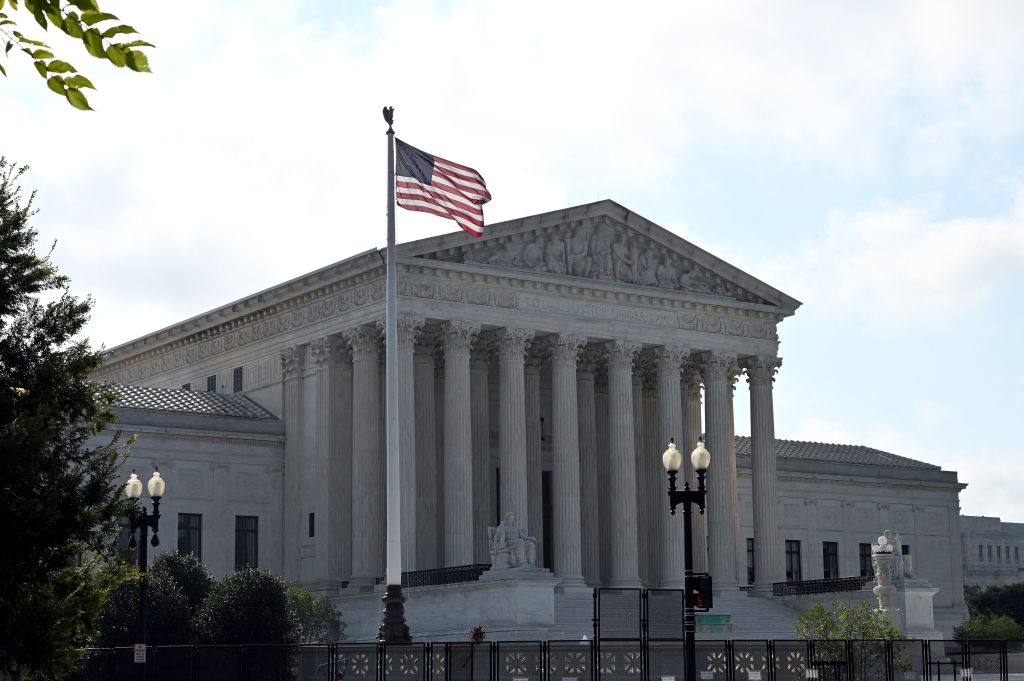While all eyes will be on U.S. Senate races and state legislative races this fall, we must pay just as much attention to state judicial races.

Kansas voters demonstrated what it means to “vote abortion” when they rejected a ballot measure that would have restricted abortion rights in their state. As voters and candidates alike ramp up for the November elections, we will see an increased focus on what it means to “vote abortion” and which races are “abortion relevant.”
A lot of attention will be paid to U.S. Senate races and state legislative races. But just as much attention must be paid to state judicial races. State judges and justices, who are elected in many states, will have the final say on what abortion rights are in their respective states. Who those judges and justices are and what their views on abortion are could make the difference in whether patients can access abortion healthcare in their state or not.
When the Supreme Court overturned Roe v. Wade in its decision in Dobbs v. Jackson Women’s Health, it sent the fate of abortion rights to the states. This means the decision will ultimately go to state courts, which for now will have the last word on state laws that have taken effect or may be enacted down the road.
Already, we are seeing lawsuits popping up in dozens of states as patients and providers strive to understand the legal landscape in their state. This includes lawsuits in Florida, Idaho, Kentucky, Louisiana, Michigan, North Dakota, Texas, Utah and West Virginia.
These early lawsuits are demonstrating the importance of state judges who are committed to fundamental rights. In several states, judges have issued injunctions to temporarily block state abortion bans and other laws impeding abortion access.
Even when an injunction by a lower court is subsequently overturned, it can still enable some patients to access abortion care in the interim. A 24-hour injunction can be enough for a clinic to re-open temporarily, and for at least some patients to access the healthcare they need. We saw this in several states in the immediate wake of the Dobbs decision. This is how critical it is that we have state court judges who believe in vindicating our fundamental rights.
A state court judge in Utah blocked enforcement of an abortion ban in that state that would have prohibited abortion with only minor exceptions. While a different 18-week ban remains in effect in Utah, this state court’s injunction has enabled temporary access to abortion care. And in West Virginia, a state judge blocked a 19th century law that criminalized the act of performing abortion and made it punishable by up to 10 years in prison.
Temporary access is not ideal, and it will become less effective as more clinics are forced to shut down and will thus not be in a position to take advantage of any injunction down the road. Still, in some states, injunctions are and could remain impactful.
This can go the opposite way as well. Judges can block abortion access for patients and contribute to the narrowing or elimination of abortion rights in their states. And we are seeing this as well, such as in Florida.
State court judges will also be instrumental in determining the success of proactive litigation as lawyers, patients and providers develop new legal arguments for abortion rights in their states, including innovative arguments based on state constitutions. Judges will be the ones to decide if these approaches succeed and gain traction in this new post-Dobbs America.
This is why voters need to pay attention to state court judge races. Too often these races fly under the radar, receiving minimal attention from the press or from voters. Top of the ticket races for governor or U.S. senator monopolize media attention, even when less high-profile races have more impact on people’s day-to-day lives or on specific high-profile issues.
The devastating harm of Dobbs is increasingly evident with each passing day. We’re seeing the extreme measures that some states are willing to pursue to ban abortion and to enforce abortion restrictions. The invasiveness of “abortion surveillance” is now real and to be frank, terrifying. People are being told not to use period trackers, not to discuss a potential pregnancy on digital platforms or even on their phones. Courts could have a say in this area as well, as the parameters of informational privacy are determined state by state.
In addition to state court judges, voters who care about abortion rights should also be paying attention to their state attorney general and district attorney races. The people in these positions could be deciding whether to prosecute someone for having an abortion. This is the world in which we now live—when prosecutors will have to use their discretion to decide whether to prosecute someone for accessing abortion care.
Abortion is on the ballot this November. Candidates running in a wide variety of races should be asked what their position on abortion rights is and how they will use their authority if elected to protect abortion access in their state. This includes candidates running for state courts and state supreme courts, as they are vying for positions of enormous power over voters’ rights to this essential healthcare.
U.S. democracy is at a dangerous inflection point—from the demise of abortion rights, to a lack of pay equity and parental leave, to skyrocketing maternal mortality, and attacks on trans health. Left unchecked, these crises will lead to wider gaps in political participation and representation. For 50 years, Ms. has been forging feminist journalism—reporting, rebelling and truth-telling from the front-lines, championing the Equal Rights Amendment, and centering the stories of those most impacted. With all that’s at stake for equality, we are redoubling our commitment for the next 50 years. In turn, we need your help, Support Ms. today with a donation—any amount that is meaningful to you. For as little as $5 each month, you’ll receive the print magazine along with our e-newsletters, action alerts, and invitations to Ms. Studios events and podcasts. We are grateful for your loyalty and ferocity.
Read more:





